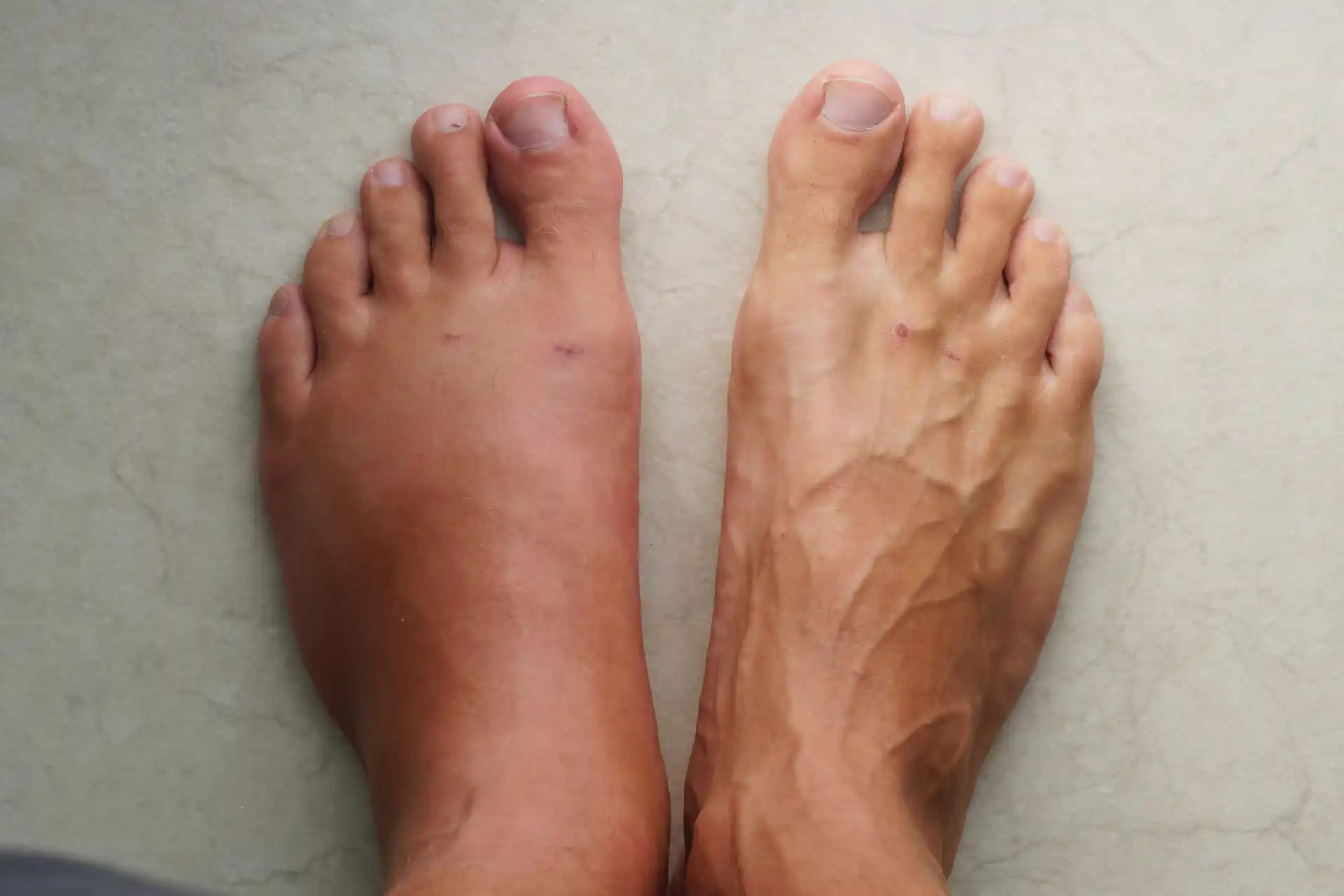If you’re living with CRPS, or Complex Regional Pain Syndrome, you already know that everyday tasks can feel overwhelming when persistent pain flares up.
About 200,000 people in the United States experience CRPS each year (Cleveland Clinic). Good news, though: the NHS reports that nearly 85% of those affected see at least some improvement in pain and symptoms within the first two years.
This article offers practical strategies you can try, plus a look at emerging treatments that might be on the horizon. The earlier you address symptoms of this condition, the better your chances of easing pain and getting back to the activities you enjoy.
Understand CRPS Basics
What Is CRPS?
Complex Regional Pain Syndrome is a chronic condition that most often affects a hand, arm, foot, or leg after an injury or surgery.
In more than 90% of cases, it stems from nerve trauma that damages thin sensory and autonomic nerve fibers in the affected limb (Cleveland Clinic). Because these nerves transmit pain and temperature signals, you might notice a burning or stinging sensation that feels far worse than the original injury.
Doctors classify it in two main ways:
- Type I: No distinct nerve injury is identified
- Type II: A known and distinct nerve injury is present
Though the exact cause isn’t fully understood, experts suggest a combination of altered nervous system responses, inflammation, and even immune factors. You might feel frustrated not having a single test that clearly diagnoses you. Instead, healthcare providers usually look at your medical history, physical exam results, and overall pattern of symptoms.
Causes And Risk Factors
While any minor or major trauma can potentially lead to complex pain, certain risk factors raise your chances of developing this condition:
- Fractures and severe sprains (particularly wrist fractures)
- Immobilization (like casting an injured limb for a long period)
- Surgery, especially orthopedic procedures
- Being female, especially over 40
- Having ongoing high levels of stress or anxiety
Research indicates that up to 66% to 80% of cases occur in people of European ancestry, and it tends to affect females more often than males (Cleveland Clinic). However, it’s relatively rare in all populations, which can make finding experienced specialists challenging.
Knowing these factors can help you and your doctor spot warning signs earlier.
To learn more about other nerve-related conditions, check out our articles on nerve compression, sciatica, hip impingement, and carpal tunnel syndrome.
Recognize Major Symptoms
Unusual Pain Patterns
If you have ongoing nerve pain that seems out of proportion to any injury you’ve had, you could be dealing with CRPS.
People often describe the discomfort as burning, stabbing, or tingling. Even a lighter-than-expected touch, such as fabric brushing against the affected area, may feel excruciating. This overreaction to normal sensations, known as allodynia, is common.
Aside from the distinctive pain, you might also encounter:
- Pain that appears to travel beyond the original injury site
- Heightened sensitivity to temperature changes
- Sporadic flare-ups triggered by stress or movement
In some people, these symptoms can occasionally settle down, only to flare up again later. This intermittent pattern can make daily life unpredictable.
If your own pain is difficult to describe or measure, healthcare providers often use tests like a nerve conduction study to better understand how your nerves are functioning.
Changes In Skin And Mood
CRPS doesn’t stop at nerve pain. You could notice redness, swelling, or skin that alternates between feeling hot and cold. Some individuals experience shiny or thin-looking skin, and hair or nail growth changes may appear in the affected area.
This happens because your nerves also help control blood flow and temperature regulation.
On the emotional side, living with persistent discomfort can be exhausting. Chronic pain can lead to psychological challenges, including depression or anxiety (NHS). So if you find yourself feeling low, it’s likely a direct response to what’s happening in your body, not just a matter of willpower.
Talking to a mental health professional can help you navigate these emotional ups and downs.
Explore Treatment Options
Medication Approaches
Early intervention is crucial. Medicines often include anti-inflammatories, pain relievers like ibuprofen, and in more severe cases, opioids or antidepressants (Mayo Clinic).
While some doctors might prescribe stronger medications off-label, as no drug is officially licensed for CRPS in certain regions, these prescriptions can still be valuable for pain management.
Commonly used medications can include:
- Over-the-counter anti-inflammatories (aspirin, ibuprofen, naproxen)
- Prescription pain relievers (opioids in short-term, low-dose scenarios)
- Neuropathic pain agents (gabapentin, pregabalin)
- Antidepressants to help with nerve sensitivity and flare-ups
Long-term use of high-dose opioids, however, can lead to more serious health concerns, such as depression or sexual dysfunction (NHS).
The best approach often involves striking a balance: using these medications for shorter periods or rotating them with other therapies.
Physical And Occupational Therapy
Movement is vital to recovery because it keeps your joints loose and maintains muscle strength. The Cleveland Clinic emphasizes that physical and occupational therapy can boost blood flow and flexibility, which in turn can help reduce pain.
A customized plan might include:
- Gentle stretching to improve range of motion
- Gradual weight-bearing exercises to build strength
- Fine motor tasks (like picking up small objects) to regain dexterity
- Techniques for adapting daily tasks (using special grips or tools)
Physical therapy isn’t always comfortable, but it’s often a cornerstone of treatment. Good news, it usually gets easier once you start seeing improvements in mobility.
Even if progress is slow, small wins—like lifting a coffee cup without severe pain—can boost your confidence.
Lifestyle Changes
Stress can amplify pain signals, so integrating methods to calm your mind might make a noticeable difference. Simple approaches like mindfulness meditation, relaxation breathing, or mild yoga can reduce the likelihood and severity of flare-ups.
Some people also explore:
- Gentle walks or swimming for low-impact exercise
- Heat or cold packs (with a doctor’s guidance)
- Journaling or counseling to process emotions
- Wearing comfortable, loose-fitting clothing to avoid irritation
If you’re also managing another nerve condition, such as diabetic neuropathy or small fiber neuropathy, these same adjustments can help you keep daily nerve pain in check.
Fascial Hydrodissection
This fluid-based treatment can release adhered fascia and soft tissue that can press on nerves—helping reduce tingling, burning, numbness, and pain associated with CRPS and other peripheral neuropathy conditions.1-7
New And Emerging Therapies
Researchers are constantly examining new avenues for relieving CRPS.
Many of these therapies are still in clinical trials or have limited availability. Some neuromodulation techniques—like spinal cord stimulation (SCS) or dorsal root ganglion stimulation (DRGS)—already show promising results for long-term relief, with certain studies suggesting potential improvements in mood and overall quality of life (PMC).
These breakthrough ideas might not yet be standard practice, but it helps to be aware of them so you can ask your specialist if and when they become more widely accessible.
In particular, researchers are investigating:
- NMDA receptor blockers (such as ketamine)
- Intravenous immunoglobulin therapy
- Peripheral nerve stimulation for targeted pain relief
- Plasma exchange therapy
Since these aren’t yet universally adopted, talk to your care team about how and when trials or new treatments might be an option for you.
Plan Your Next Steps
Although CRPS can feel daunting, remember that most people see at least partial relief over time.
If you’re wondering how best to move forward, consider the following:
- Talk With a Specialist
A doctor who is experienced with nerve disorders can map out personalized strategies. Ask about medication options, whether short-term opioids are appropriate, and whether you might benefit from advanced interventions. They may also suggest a nerve injury assessment or a nerve conduction study for deeper insights. - Pursue Early Physical Therapy
Don’t wait until pain becomes unmanageable. Consistent motion helps ease swelling and stiffness. Even slow, careful exercises can pay off long-term. - Explore Supportive Therapies
Consider relaxation techniques, cognitive behavioral therapy, or routine mindfulness practices. You might find group support through local pain management meetups or online forums. - Keep an Eye on Research
Clinical studies are evolving, so staying informed could open new doors for you. Neuromodulation, immunotherapies, and other targeted treatments may become more mainstream. - Check Out Related Conditions
If your discomfort overlaps with other nerve issues, take a look at resources on peripheral neuropathy or CRPS treatment. Knowledge is power, especially when you’re making decisions that affect your day-to-day comfort.
Whether you’re in the early days of diagnosis or exploring new treatments after years of living with chronic pain, remember that progress is possible, even if it comes slowly.
Stay attentive to small improvements—no matter how minor they might seem—and celebrate them as signs you’re moving forward.
Seek RELIEF®
RELIEF® is a science-backed treatment that targets dysfunctional fascia, which may contribute to nerve irritation and peripheral neuropathy.
Using a gentle technique called hydrodissection, RELIEF® releases adhered fascia and soft tissue that can press on nerves—helping reduce tingling, burning, numbness, and pain associated with nerve pain and other peripheral neuropathy conditions.1-7
RELIEF® is a minimally invasive alternative to traditional treatments and does not require steroids, long-term medication, surgery, anesthesia, or post-procedure immobilization.
If you’re in the Miami area and seeking relief from peripheral neuropathy, contact us today to schedule a consultation.

.webp)




.svg)